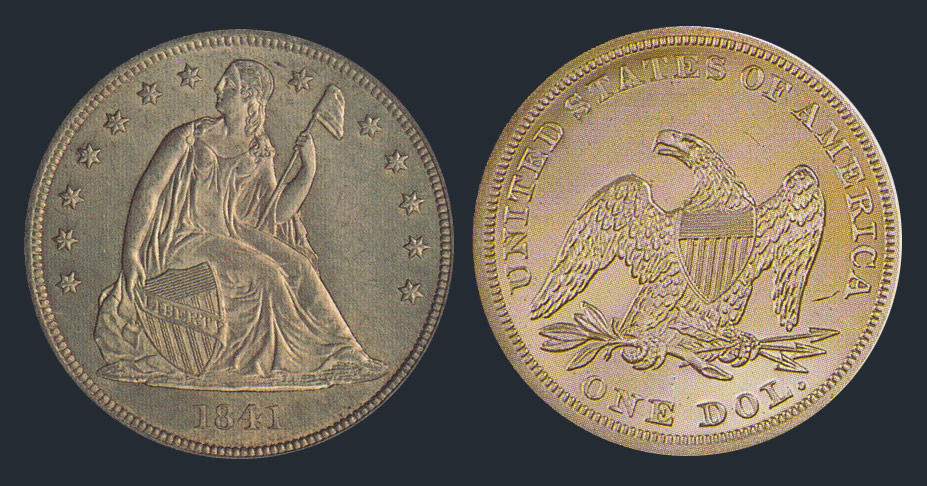
The Seated Liberty dollar was the last silver dollar struck before passage of the Coinage Act of 1873, which officially ended production of that denomination. The coin, struck from 1840 to 1873, succeeded the Gobrecht dollar, which was minted on a trial basis in order to determine whether or not the public would approve of the silver dollar, which hadn’t been struck since 1804.
The design was based on the Gobrecht dollar, but the soaring eagle used on the reverse of that coin was replaced with a heraldic eagle. All Seated Liberty dollars were struck at the Philadelphia Mint until 1846, when production began at the New Orleans Mint. In the late 1840s, the price of silver increased rapidly due to an influx of gold caused by the California gold rush; this led to widespread hoarding and melting of American silver coins. The Coinage Act of 1853 lowered the silver content of all coins denominated higher than five cents except for the dollar. Later, production increased, leading to a surplus of the coins.
In 1866, "In God We Trust" was added to the dollar as well as other denominations following its introduction to United States coinage. Seated Liberty dollar production was officially halted by the Coinage Act of 1873, which authorized the trade dollar, although silver dollar production resumed in 1878 with the Morgan dollar.

